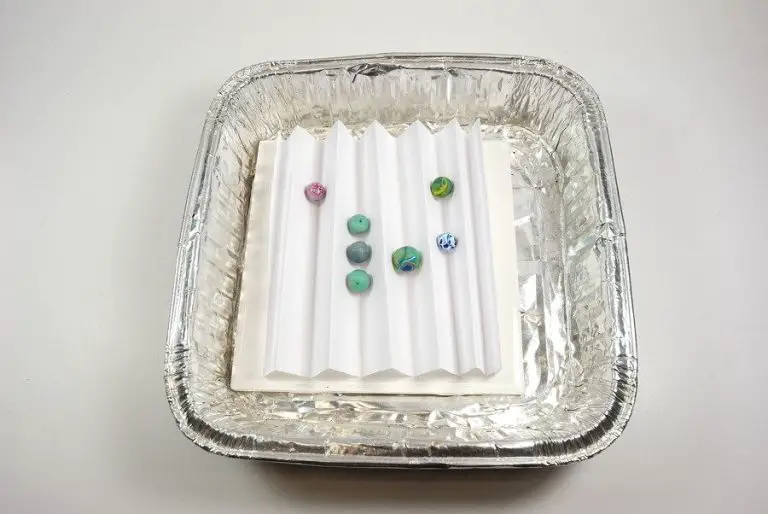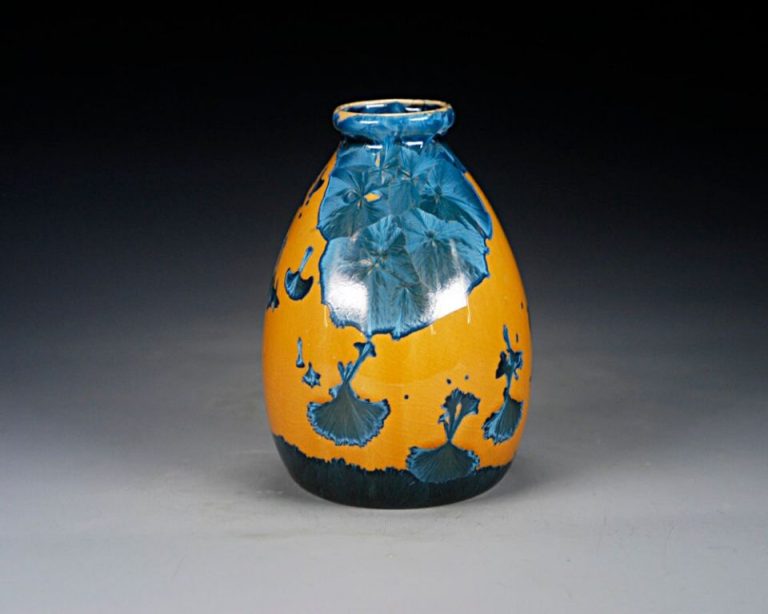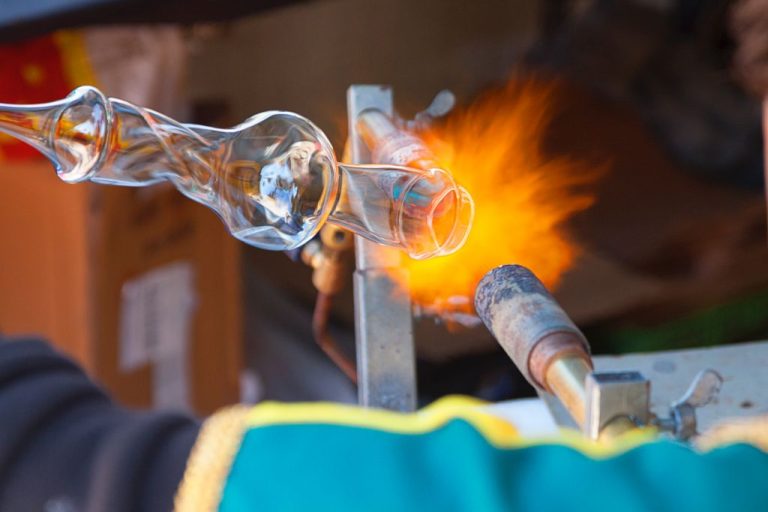What Is The Most Common Mold Material For Slip Casting?
Slip casting is a ceramic forming process where a liquid clay body slip (a mixture of clay and water) is poured into a plaster mold. The slip fills the mold and forms a layer against the mold surface, while excess slurry is poured out. As the liquid clay touches the porous mold surface, water is absorbed into the plaster and the clay particles consolidate to form the final shape.
This casting process allows for the precise reproduction of complex shapes, giving the ability to make intricate, high quality ceramic parts. Slip casting is commonly used to make sanitaryware, tableware, sculpture, mechanical parts, and other ceramic objects. It is a cost-effective way to achieve complex forms with a smooth surface finish.
According to Merriam-Webster dictionary, slip casting is defined as “the process of forming ceramic ware by pouring slip into usually plaster molds.”
Plaster of Paris
Plaster of Paris (POP) is one of the most commonly used materials for slip casting molds due to its absorbent properties and cost effectiveness. POP is made from gypsum, which is hydrated calcium sulfate (Ceramic Processing: Slip Casting). When gypsum is heated to around 150°C, it loses water molecules and becomes Plaster of Paris. This heating process creates pores in the POP particles. When mixed with water again, POP rehydrates and recrystallizes into an interlocking matrix.
The porous nature of POP allows it to quickly absorb water from liquid clays, or slips, creating a hardened cast as the water gets drawn out. The plaster mold then needs to be dried completely before being reused for casting. POP is an ideal slip casting material because it is rigid when dry, yet semiporous and absorbent when wet. It can capture fine detail, sets rapidly, and is inexpensive compared to other mold making materials (Ceramic Slip Casting).
Silica
Silica is another common material used for making slip casting molds. It has unique properties that make it well-suited for slip casting applications:
Silica has high refractoriness, meaning it can withstand very high temperatures without deforming. This allows it to hold up to the heat of ceramic slips during casting. Silica also has low thermal expansion, so it resists cracking or warping when subjected to temperature changes.
Silica exhibits high chemical resistance and does not react with water-based ceramic slips. It also has a fine particle size distribution, allowing it to capture very fine details from the original model. The surface of silica molds is smooth, which reduces friction and allows for easy release of the cast pieces.
Silica can be used in two main forms for slip casting molds: fused silica and silica flour. Fused silica provides high precision and stability, while silica flour is more porous and absorbs water from the slip. The choice depends on the specific casting application and desired mold properties.
Overall, the unique physical and chemical characteristics of silica make it an ideal material for manufacturing molds for the slip casting process.
Comparison
Plaster of Paris and silica are the two most common materials used to make molds for slip casting ceramics. Both have advantages and disadvantages when used for this purpose.
Plaster of Paris is cheaper and easier to use than silica. It can be purchased as a dry powder and mixed with water to make the slip casting mold. However, according to discussions on WarmGlass.com, plaster molds scratch more easily, pit faster, and do not last as long as silica molds.
Silica, on the other hand, makes a more durable mold that can withstand repeated castings without deteriorating. But silica is more difficult to prepare and requires firing at high temperatures to set it into a hard ceramic material suitable for slip casting. As noted on Reddit’s r/Pottery community, silica molds hold up better over time compared to plaster. However, the increased durability comes at a higher upfront cost.
When choosing between plaster of Paris and silica, potters need to weigh the lower cost and ease of plaster against the greater durability and longevity of silica molds. For limited production runs, plaster may be the more economical choice. But for potteries casting numerous pieces over many years, silica’s hardiness makes it worth the added effort and expense.
Other Materials
While plaster is the most common material used for slip casting molds, there are some other options as well. Two less common but viable alternatives include graphite and high-fire ceramic materials.
Graphite can be used to create molds that are more durable than plaster. The graphite mold can withstand higher casting pressures and hold up better to prolonged use. Graphite molds need to be coated with a release agent, but do not require the absorbency of traditional plaster molds.
Some ceramic artists also experiment with casting into molds made from high-fire ceramic materials like stoneware or porcelain. These molds can be bisque fired to become more durable. The biggest downside is that ceramic molds are time consuming and difficult to create compared to plaster. They also don’t offer the same absorbency as plaster for wicking away moisture from the slip.
Best Applications
When choosing between plaster of Paris and silica for slip casting molds, it’s important to consider the application and the types of pieces being cast. Here are some key factors to consider:
For casting simple geometric shapes, plaster of Paris is often the better choice. It’s porous nature allows for gentle suction of moisture from the slip, yielding uniform wall thicknesses. The porosity also enables venting of air bubbles. Plaster is ideal for casting shapes like cups, bowls, plates, and tiles.
For casting detailed and intricate pieces, silica is generally superior. Because silica molds do not absorb moisture, they can precisely reproduce fine details and complex shapes. The hardness of silica also allows molds to last through more casting cycles without wear. Silica works well for detailed sculptures, decorative pieces, jewelry, and dental ceramics.
For industrial applications requiring high production runs, silica is preferred. The durability of silica molds enables significantly more cycles before the mold must be replaced. The non-porosity also provides consistency between castings. These factors make silica ideal for high volume manufacturing.
When casting large pieces, plaster of Paris is often better. The lower cost of plaster makes large molds more affordable. The porosity can also be beneficial for evenly drying thick-walled castings from the inside out. However, reinforcement with fiber may be required for strength.
Considering these key factors and needs of a specific application will lead ceramists to select the best material – plaster or silica – for slip casting their pieces.
Preparing Molds
Before slip casting, the mold must be prepared properly. Plaster and silica molds have some differences in preparation steps.
For plaster molds:[1]
- Ensure the mold is completely dry before casting. Plaster molds absorb water from the slip and can become saturated if not fully dried.
- Apply a release agent like Vaseline to the mold surface. This prevents the dried cast piece from sticking.
- Securely attach the two mold halves together with rubber bands or clay before pouring slip.
For silica molds:[2]
- Let the freshly made silica mold sit for 12-24 hours before first use. This allows trapped moisture to fully evaporate.
- Apply a thin layer of release agent and buff in well. Silica molds require heavy application before first use.
- Tightly clamp the mold halves together with C-clamps. Silica molds rarely leak but can separate from slip pressure.
Proper mold preparation creates smooth castings and extends the mold’s useful life.
Sources:
[1] https://ceramicartsnetwork.org/daily/article/How-to-Make-a-Plaster-Mold-for-Slip-Casting
[2] https://www.thecrucible.org/slip-casting-in-five-steps/
Casting Process
The slip casting process begins by pouring a liquid clay slip into a porous plaster mold. As the slip contacts the mold, clay particles are deposited on the mold surface, forming a layer of clay. At the same time, water from the slip is absorbed into the mold. This continues until the clay layer reaches the desired thickness, forming the final cast piece. The excess slip is poured out, leaving the cast piece to be dried and fired.
Plaster is the most common material used for slip casting molds, as it is inexpensive and absorbs water well. According to Bechthold, Kane, and King’s Ceramic Material Systems, tiles can be produced using a modified industrial slip casting process with plaster molds to achieve precision and consistency (https://issuu.com/birkhauser.ch/docs/bechthold__kane__king_ceramic_mater). The plaster mold soaks up water from the slip, leaving an even layer of clay deposited on the mold surface.
While plaster is very common, other materials like silica can also be used. The key is finding a porous material that readily absorbs water from the slip.
Advantages/Disadvantages of Plaster vs. Silica Molds
Plaster and silica are the two most common materials used to make molds for slip casting. They each have their own sets of pros and cons.
Plaster molds have several advantages:
- Plaster is inexpensive and readily available (https://www.sporvil.com/blog/slip-casting-of-ceramics/)
- It’s easy to mix and pour plaster into molds
- Plaster molds pick up fine detail well
- The process is simple enough for beginners
However, plaster also has some disadvantages:
- Plaster is fragile and prone to cracking or breaking, especially for bigger molds
- It has a shorter lifespan than silica molds, lasting for 10-20 casts typically
- Plaster can sometimes stick to the dried cast piece
- It is absorbent, so slip can soak in and be wasted
Silica molds are made from synthetic bonded silica sand. They offer several benefits:
- Much greater durability than plaster, lasting for hundreds of casts (https://ceramicartsnetwork.org/ceramics-monthly/ceramics-monthly-article/three-approaches-to-slip-casting-plates/)
- Silica won’t stick to the cast pieces
- Minimal absorption so less slip is wasted
- Withstands higher casting pressures
The disadvantages of silica molds include:
- Higher cost than plaster
- Making the molds requires more skill
- Not as good at capturing extremely fine details
Overall, plaster molds are the simplest and most affordable option, especially for novices or small production runs. But silica lasts much longer and wastes less material, making it better for larger scale manufacturing.
Conclusion
In summary, the two most common materials for slip casting molds are plaster of Paris and silica. Both have their advantages and disadvantages.
Plaster of Paris is inexpensive and easy to work with, making it a good choice for beginners and small productions. It can capture fine detail well. However, it is not very durable for repeated castings. Plaster molds need to be stored carefully to avoid damage.
Silica is more durable and can withstand higher casting temperatures. It allows for larger production runs. But silica is more difficult to work with and requires advanced mold-making skills. The material costs are also higher compared to plaster.
When selecting a mold material, factors like cost, mold complexity, production volume, and casting process details should be considered. Both plaster and silica have their place as common mold materials for slip casting.




